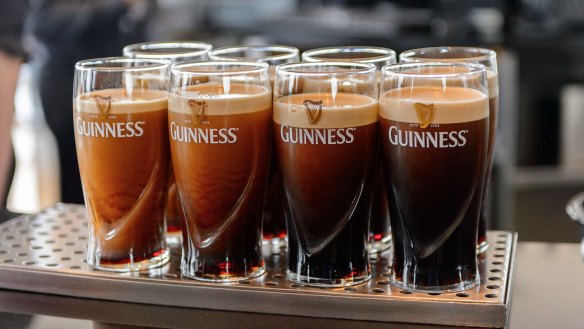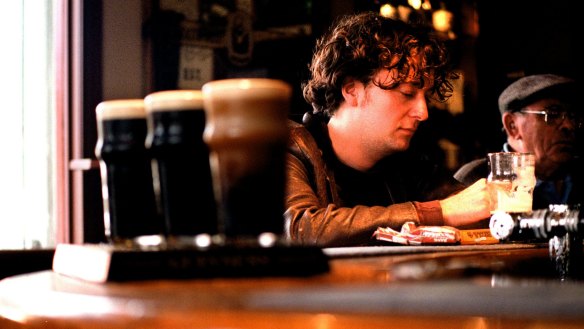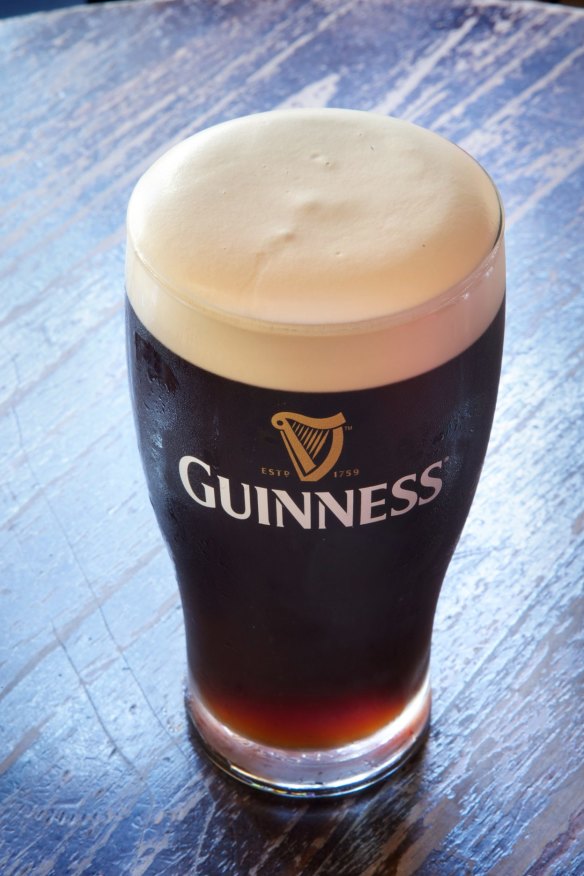Seven things you might not know about Guinness

Tap the black stuff and break out the food dye. Saint Patrick's Day is here again. Australian pubs will be serving more Guinness on March 17 than any other day of year and for this Saint Pat's you might expect a better pour of the stout than you're used to.
Dublin-based Guinness ambassador Domhnall Marnell has been travelling Australia for the last few weeks to promote the Irish brewery's new Hop House 13 lager and teach bartenders all about the "pageantry of the Guinness pour".
I caught up with Domhnall to discuss a few facts about the beer to consider next time you're waiting for a pint to settle - a pint that Marnell reckons should absolutely not have a four-leaf clover made with green food dye scribbled on its head. "You don't doodle on the Mona Lisa," he says.

1. Timing is everything
The perfect Guinness pour takes 119.5 seconds. Not a nanosecond more or less. First pour the stout to the top of the golden harp on the Guinness glass, allowing it to settle for 90 seconds as the tiny nitrogen bubbles form a foam at the top of the beer. Then it's a matter of topping the pint with a splash more beer so the head remains the same size but the foam is just peaking above the rim. Why 119.5 seconds? "If you tell someone it takes two minutes to pour a beer, it sounds like too much effort," says Marnell. "119.5 seconds is much more scientific."
2. Keep the collar tight

If a Guinness pint is poured all at once it will result in a beer with a head that's too thick. In Ireland this is called a "bishop's collar" and you may have to leave the country if you're responsible for one. Serving Guinness in a pewter mug is also frowned upon as the gas doesn't react well with the metal alloy and will form a dodgy foam. Pint glasses only, please.
3. Actually not a meal in a glass
Although Guinness is perceived as a heavy beer, a pint of the Irish champagne only contains around 879 kilojoules. A fair number if you're watching your energy intake, but a similar amount of kilojoules to most standard full-strength Aussie beers. At 4.2 per cent alcohol you'll be less shickered after a couple of Guinness rounds than you would if you were drinking VB, say, which weighs in at 4.9 per cent alcohol by volume.
4. Black Rose
When a journalist in the '70s asked Thin Lizzy frontman Phil Lynott what it was like to be black and Irish, the Dubliner brilliantly replied "like a pint of Guinness". Although Lynott was a fan of the Guinness iconography, his favourite beer was reportedly Smithwick's - an Irish red ale originally brewed by Kilkenny. Today, Guinness and Kilkenny are both owned by multinational beverages company, Diageo.
5. Red velvet
The official colour of the black stuff is actually ruby red. Hang on, what? "Pubs tend not to have the best lighting in the world and if you're drinking a beer, at night, in a pub, then yes, it's going to look black," says Marnell. "If you're drinking it in daylight you'll see that the beer has a ruby red hue. It comes out red when it pours - it's only when there's a lot of it in the glass that it creates an illusion of darkness."
6. Guinness on the Gulf of Guinea
African punters are big fans of the beer and the most Guinness is sold in the USA, Ireland, Britain, Nigeria and Cameroon. "Year on year, around 30 per cent of all Guinness is sold in Africa," says Marnell. "It has been in Africa since the 1800s however it's also important to note that it's not the same Guinness we drink in Ireland or Australia. It's only served in bottles and is higher in alcohol by volume to the tune of 7.5 per cent, creating a more bitter beer. It's popular in Africa because before refrigeration and modern bottling techniques, a beer that strong and dark was impervious to the heat and sunlight it would encounter en route to the continent. It would still taste good after a long journey." Guinness has breweries in Nigeria, Cameroon, Ethiopia and Ghana and Marnell says many African Guinness drinkers would be surprised to find the beer has its roots in Ireland.
7. Good for a few millennia
The Guinness company was established in 1759 when Arthur Guinness signed a 9000 year lease on St James's Gate Brewery in Dublin. That physical lease still exists however it only covered four acres of land. St James Gate has since expanded to 55 acres of land that Guinness now owns itself.
- More:
- Beer and cider
- Drinks
